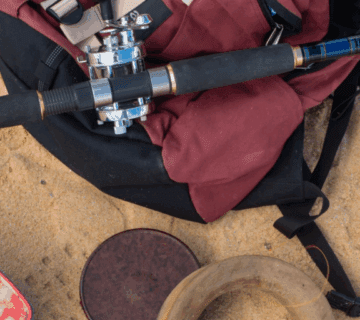Can You Eat What You Catch on Fishing Trips?
Fishing is more than just a hobby—it’s a way to connect with nature, challenge yourself, and even put food on the table. But one question many anglers ask is: Can you eat what you catch on fishing trips? The answer isn’t always straightforward. It depends on factors like location, fish species, water quality, and local regulations. In this article, we’ll explore the joys and challenges of eating your catch, how to ensure it’s safe, and why this practice can be deeply rewarding.
The Thrill of Eating Your Catch
There’s something incredibly satisfying about cooking and eating a fish you’ve caught yourself. It’s a direct connection to nature, a testament to your skills, and often a healthier alternative to store-bought seafood. However, not every fish is safe to eat, and some require careful preparation.
Benefits of Eating What You Catch
Freshness & Flavor – Freshly caught fish tastes better than anything you’ll buy in a supermarket.
Sustainability – Responsible fishing helps reduce over-reliance on commercial fisheries.
Cost-Effective – A successful fishing trip can provide free, high-quality protein.
Skill Development – Learning to clean, prepare, and cook fish enhances self-sufficiency.
Factors to Consider Before Eating Your Catch
Before you fire up the grill, consider these crucial factors:
1. Local Fishing Regulations
Many regions have strict rules about which fish are safe to eat and how many you can keep. Always check:
Size limits
Catch limits
Seasonal restrictions
2. Water Quality
Fish absorb contaminants from their environment. Avoid eating fish from polluted waters, especially near industrial areas or agricultural runoff zones.
3. Fish Species
Some fish are more prone to toxins (e.g., mercury in large predatory fish like tuna or swordfish). Others, like tilapia and trout, are generally safer.
4. Proper Handling & Storage
Improper handling can spoil your catch. Follow these steps:
Keep fish cold (on ice or in a cooler).
Clean quickly to prevent bacterial growth.
Cook thoroughly to kill parasites.
Safe vs. Unsafe Fish to Eat
Here’s a quick comparison of commonly caught fish and their safety levels:
Table 1: Safe vs. Risky Fish to Eat
| Safe to Eat | Potentially Risky | Reason |
|---|---|---|
| Rainbow Trout | Shark | High mercury levels |
| Catfish | King Mackerel | Bioaccumulation of toxins |
| Tilapia | Tilefish | Contaminants in fatty tissues |
| Salmon (wild-caught) | Bluefish | PCB contamination risks |
Table 2: Best Cooking Methods for Different Fish
| Fish Type | Best Cooking Method | Why? |
|---|---|---|
| Trout | Grilling or Pan-Frying | Enhances natural flavors |
| Catfish | Deep-Frying | Crispy texture, neutralizes mud taste |
| Salmon | Baking or Smoking | Preserves healthy fats |
| Bass | Grilling with Herbs | Reduces fishy odor |
How to Ensure Your Catch Is Safe to Eat
1. Research Your Fishing Spot
Check local advisories on water contamination.
Avoid areas with industrial pollution or algae blooms.
2. Follow Proper Cleaning Techniques
Remove guts quickly to prevent spoilage.
Rinse with clean water.
3. Know the Signs of Freshness
Clear eyes (not cloudy)
Firm flesh (not mushy)
Fresh, ocean-like smell (not overly fishy)
4. Cook to the Right Temperature
Fish should reach 145°F (63°C) internally.
Freezing certain fish beforehand can kill parasites.
The Ethical & Environmental Impact
Eating what you catch aligns with sustainable fishing practices, but it must be done responsibly:
Avoid overfishing – Follow catch limits.
Respect endangered species – Release protected fish.
Minimize waste – Use as much of the fish as possible (e.g., making stock from bones).
Inspirational Takeaways
Fishing isn’t just about the thrill of the catch—it’s about understanding ecosystems, respecting nature, and nourishing yourself. When done right, eating what you catch on fishing trips can be one of the most rewarding experiences. It teaches patience, responsibility, and gratitude for the food we consume.
So next time you reel in a fish, ask yourself: Can I eat this? If the answer is yes, savor the moment—you’ve earned it.




